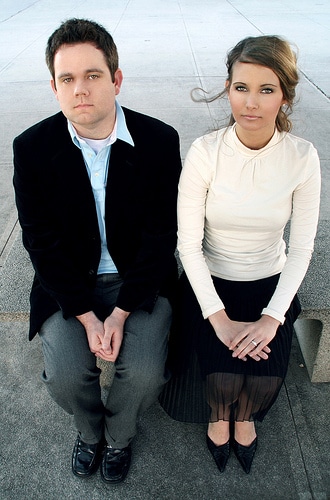![]() This is a guest post from Sonny Gill, a social media strategist and community guy whose passion for this space can be well documented through his career experience, as well as via his blog SonnyGill.com.?You can also find him as @sonnygill on Twitter, and writing for his second passion, basketball, at RockinTheRim.com.
This is a guest post from Sonny Gill, a social media strategist and community guy whose passion for this space can be well documented through his career experience, as well as via his blog SonnyGill.com.?You can also find him as @sonnygill on Twitter, and writing for his second passion, basketball, at RockinTheRim.com.
Phone > Email > Text > SMS > Blogging > Facebook > Video > Twitter: that?s a quick and dirty look at the basic evolution of our communication channels over the past few years.
We?ve grown faster, smarter, technologically savvy, and more efficient with the tools and services we use to communicate with one another in this digital era.
This sort of hyper-connectivity leaves seemingly little time-waste when it comes to responding to one our colleague?s tweets or a friend?s message (or numerous fan page requests) on Facebook. But as we continue to get deeper into the social media realm, I?ve heard just as much talk that our hyper-connected lives have actually made us become disconnected, with the real world.
I?ll be the first one to admit that I?m a technophile and practically sleep with my laptop and iPhone. People who know me online (and off) realize that I am constantly connected online, have a finger on the pulse of what?s happening in the social media space, and studying how companies are utilizing it successfully, or not.
It?s who I am, it?s in my genes, and it?s what?s helped me get this far in my career, as I continue to try to make waves.?With that though beckons the questions of this lifestyle:
- Are we sometimes too hyper-connected?
- Do we pass up opportunities in real-life because we?re tending to online activities?
- Are we not spending enough time away from technology?
We?ve built respected communities online that we connect with on a daily basis, but that doesn?t necessarily mean they?re no more real than the people and activities we take part in outside of our home. Where should the line be drawn and a balance created with our online activity and ?outside-the-Internet? lives? Or has that line evolved into a blur?
What I?ve come to realize is that this tech/social media world isn?t for everyone. It pushes people to different levels ? working on nights and weekends, creating proposals, continually writing fresh content (as I write this on a Sunday night), responding to tweets all times of the day ? the list goes on.
Hyper-connectivity has become somewhat of a prerequisite in this industry and can be seen as unbalance or overwhelming to the outside eye.
But what?s your perspective ? how do you see your online activity?
Are you bettering your experiences & skills and building trust within your circles through constant activity, or do you think those who question the technophile?s lifestyle are right? Do you feel that we should find a better balance between these respective worlds?


 This is a guest post from Andrew Weaver, a photographer, blogger, and self described social media geek. He has an interest in helping others improve their lives both personally and professionally. He authors the blog
This is a guest post from Andrew Weaver, a photographer, blogger, and self described social media geek. He has an interest in helping others improve their lives both personally and professionally. He authors the blog 
 This is a guest post from
This is a guest post from 


 Recently I enjoyed? a great conversation with Tom Cunniff on Twitter. It revolved around social media definitions and how brands and voices could be heard across the sphere. I was so intrigued by Tom’s views I asked if he’d guest here. I’m thankful he said yes.
Recently I enjoyed? a great conversation with Tom Cunniff on Twitter. It revolved around social media definitions and how brands and voices could be heard across the sphere. I was so intrigued by Tom’s views I asked if he’d guest here. I’m thankful he said yes.  A dozen conversations won’t cut it.? A hundred won’t do it either.? Even thousands of conversations won’t do it.? You literally need millions of conversations and you need them fast.
A dozen conversations won’t cut it.? A hundred won’t do it either.? Even thousands of conversations won’t do it.? You literally need millions of conversations and you need them fast.